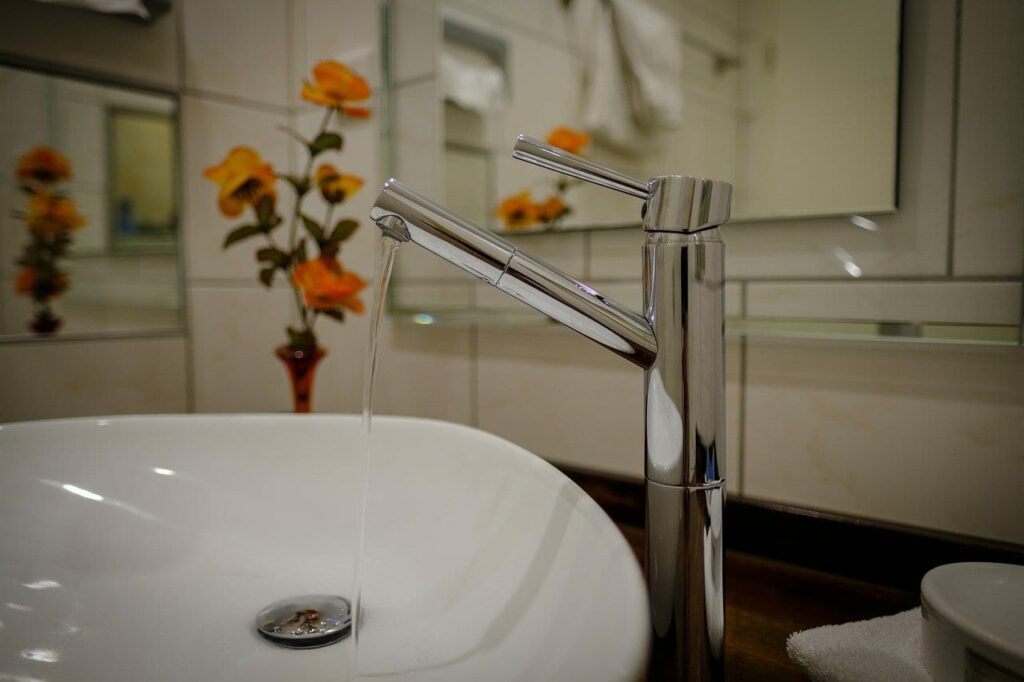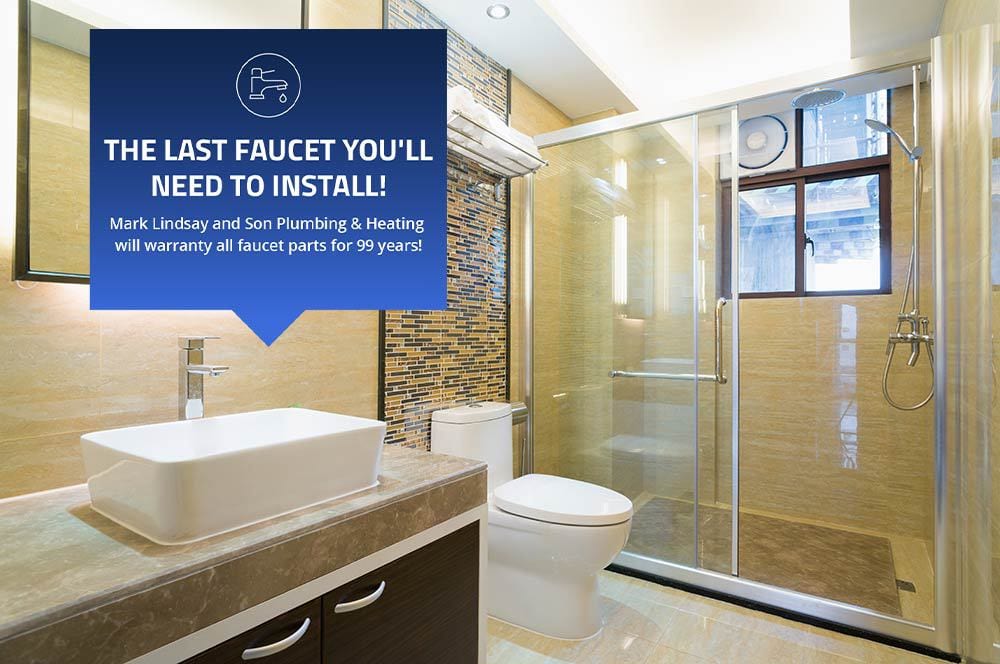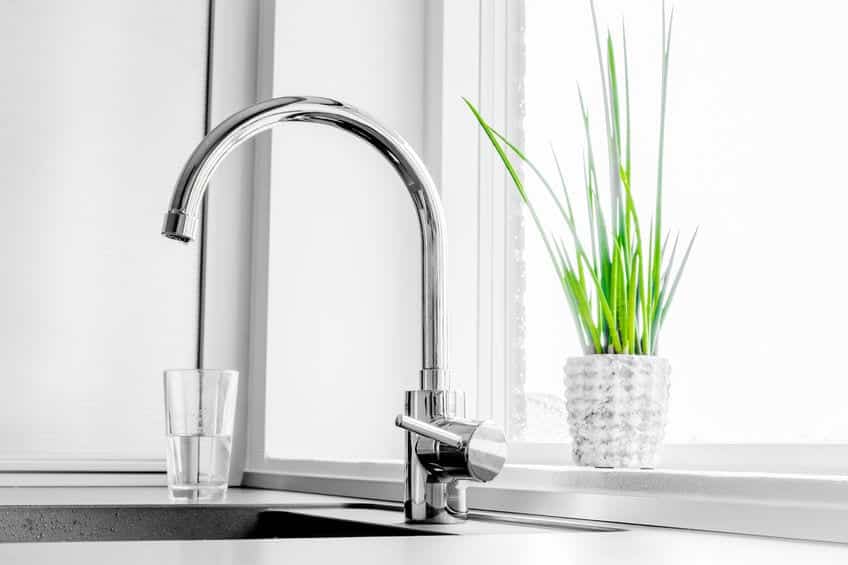Speaking of Faucets: Your Bathroom & Kitchen Faucet Upgrade Guide
Speaking of Faucets: Your Bathroom & Kitchen Faucet Upgrade Guide

You’ve decided to upgrade your bathroom and/or kitchen and you’re trying to decide what kind of faucets you want to use. Even if you’re just replacing an old faucet and not doing a complete renovation, there’s still a number of factors you need to account for. There’s the type of faucet, the material it’s made of, the finish, the color of the finish and so on.
Then there’s the matter of installing it and whether you’re the DIY type or would rather pay a professional plumber. Regardless, we’ve put together this easy to follow faucet guide that will give you a rundown of the types of bathroom and kitchen faucets available, what they’re made of, and if the faucet you want to use is appropriate for the space.
Types of Bathroom Faucets
Yes, Virginia, there are a bunch of different bathroom faucets. This list will give you an idea of what’s available and which one might work for you.
- CENTER SET – It’s a common type available in most home center and hardware stores. It has a small faucet body that has one or two handles or knobs to control the water flow and temperature. They’re compact and great for small powder rooms or if you have a small place, (looking at you, New York City.)
- SINGLE HANDLE – It’s exactly as its name indicates: it has a single handle that controls water flow and temperature. The handle can be on either side or right above the spout. They can be mounted in a smaller space, even one only two or three inches wide. These are the easiest to install yourself.
- SPREAD FIT – This faucet uses three pieces that are similar to the center faucet but are wider apart. These aren’t cramped and are good for large master baths or large guest baths. They have that four-star hotel look.
- BRIDGE FAUCET – It’s just as its name suggests, a faucet with a clean, sleek, bridge-like design. More often found in professional settings where cleanliness is a priority. It has separate knobs and often has a pull-out spray head.
- WALL MOUNTED – Designed with floating sinks in mind, it’s usually used in a more modern style bathroom. You need to take accurate measurements, or else the spout won’t reach the sink and it’ll look silly and you’ll have to redo it.
- SPRINKLE FAUCET – These have a rectangular, rather than round, spout. It has a screen that allows the water to flow out in a rectangular pattern. Definitely something to consider if you’re doing a renovation with a modern look.
Bathroom Faucet Materials
These are the most common bathroom faucet materials.
- BRASS – Probably the most popular material. Brass is an alloy of copper and zinc and has a shiny, yellow color that is typical of the material. It may have aluminum added for strength and resistance to corrosion, and tin to prevent the loss of zinc due to water exposure. Both additions help extend the life of the faucet.
- STAINLESS STEEL – Stronger than brass and has a nice, classy look. It’s a hard material and resists dents and scratches well. It does show water marks and fingerprints, so if you like a shiny faucet, be prepared to clean it regularly.
- ZINC – Zinc has been a popular replacement for brass due to affordability. Zinc naturally has a dull gray color but can be plated with chrome that will look great! Zinc is highly corrosion resistant and lightweight.
- PLASTIC – Often used due to its low cost and ease of installation. Polyethylene plastic is a good option because its cross-linked fibers make for a sturdy body that doesn’t wear out. It’s resistant to chipping. They can be ordered in a number of fancy designs with accents on the knobs among other features. One downside is the tendency for mold to form between the plastic body and the knob, so be aware of this.

Additional Features to Consider
Below are some additional features to consider when choosing a new faucet:
- A stopper that uses a lever or a pull to close the drain if desired.
- A soap dispenser
- A flexible head. This is similar to a kitchen faucet that pulls out to make it easier to rinse things off, such as a razor or toothbrush.
Faucet Costs
Your costs for a new bathroom faucet are based on three factors:
- Where you’re installing it
- The faucet size and arrangement
- What it’s made of
For most common faucets, your cost will be around $250-$400. This is the minimum based on the features you can add to the faucet.
A bridge faucet can run around $350-$500 only due to the more elaborate design.
A spread fit faucet can cost the same due to the possible added cutting needed to get it to fit as well as the extra work to get it hooked up properly.
A wall-mounted faucet can cost even more, due to the work necessary to run the necessary plumbing, mounting points, and closing up the wall opening. These estimates are all for materials only and do not include installation costs. Mark Lindsay and Son, Plumbing and Heating will warranty all parts for 99 years! It truly will be the last faucet you have to buy.
Types of Kitchen Faucets
Tired of the endless “drip, drip, drip” of a leaky faucet? Does your faucet not really work anymore or is it time for a kitchen redo or full renovation? Not sure what faucet you want or really need? Here’s a list of the main types of kitchen faucets:
- PULL DOWN – Uses a spray wand that pulls straight down from the faucet into the sink. Great for washing dishes, produce, your new puppy, cleaning the sink, etc.
- PULL OUT – The difference from the pull down is that the faucet body works in a straight line, rather than having a curve that points down. Good for a spraying in any direction but make sure the kids don’t know this.
- SINGLE HANDLE – Uses a single handle to control temperature and water pressure. Can take a while to get the temperature you want, and the temperature can be a little less precise.
- DUAL HANDLE – Has separate levers for hot and cold water. They can be attached to a central piece or mounted on either side of the faucet body. It requires separate connections for hot and cold water. Usually, the left handle controls the hot water, and the right handle controls the cold water.
- COMMERCIAL STYLE – Commercial style faucets use a long, flexible design. Some models have multiple taps for various needs. It gives a more modern look to your kitchen. These are found in professional kitchens. If you’ve ever worked in a restaurant, you’ve seen or even used one of these.
- SEPARATE SPRAY – A separate spray faucet gives you more flexibility. It has a separate spray handle with a handle that diverts the water flow to the nozzle. It’s connected to the water supply and when you turn on the water, it’s ready to go.
- POT FILLER – These faucets have a swing arm that allows you to easily fill large pots. A lot of people have them installed on the wall behind the stove, so you don’t have to lug a heavy, water filled pot across the kitchen.
- MOTION DETECTION FAUCET – These faucets have a motion sensor. You pass your hand over the sensor to turn on the faucet. You can also put a pot or other item below the faucet to activate it. You use the lever to adjust the temperature.
Kitchen Faucet Parts and Installation

- FAUCET NECK – The “tube” that carries the water from the mount to the sink. The three main neck types are: Standard, Goose Neck, and Bridge.
- HANDLES – Faucets come with either one or two handles.
- INSTALLATION LOCATION AND TYPE – Deck mounted, or wall mounted. Installation takes into account how many holes you need to make in the counter or wall to mount the faucet. It depends on the design, or what is already there.
Kitchen Faucet Materials
The materials used to make kitchen faucets are mostly the same as bathroom faucets except for bronze and copper. Bronze has a darker tone and gives a rustic look to your kitchen. Copper also has a darker tone but gives a nice, refined look. The other materials are Zinc Alloy and Stainless Steel.
Final Thoughts About Bathroom & Kitchen Faucets
Whew, that’s a lot of information! The best thing to do is take your time and reach out to Mark Lindsay and Son Plumbing and Heating. Let us help you create the kitchen or bathroom of your dreams for you and your family. We can help you figure out exactly what you want to do (just replace the faucet, a facelift, or a complete renovation), decide on a budget, and then proceed with your project.
Make sure you allow for any unexpected costs, such as possible hazardous material removal, other plumbing issues found while working on the project, and so on. Doing this will help ease the stress of a large project and make things easier for everyone concerned.

